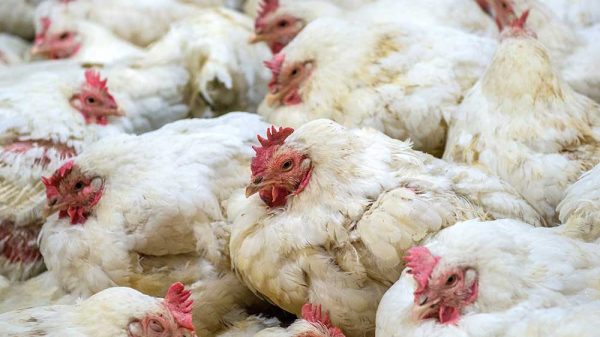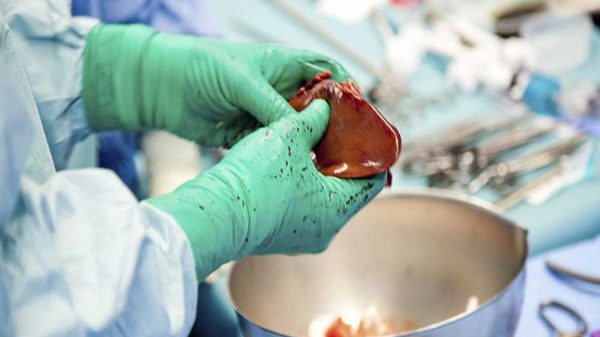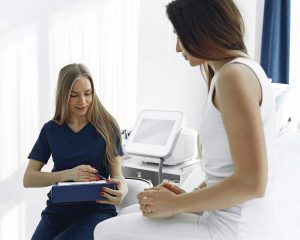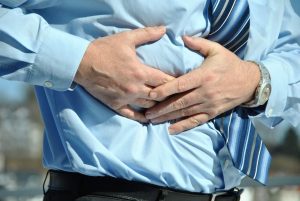Do you think you might have liver cirrhosis? Heavy drinking is often linked to cirrhosis but there’s also non-alcoholic liver cirrhosis, which can produce many of the same symptoms as alcoholic cirrhosis. If you’ve already been diagnosed with fatty liver disease (FLD) or liver hepatitis then there’s a greater chance you’ll develop liver cirrhosis. There are different diagnosis methods including liver cirrhosis ultrasound. This method uses sound waves to produce images that monitor the liver’s function. That includes the flood of blood into and out of the vital organ. This is one of the most common diagnostic tools used to diagnose liver cirrhosis.
As with other serious diseases, it’s important to get tested for cirrhosis you’re at risk. This can help to get treatments needed to manage the disease effectively. In the early stages, it’s sometimes possible to reverse the disease’s effects. While the only “cure” for cirrhosis is liver transplant you can certainly take steps to slow down liver damage. However, the process starts with first getting diagnosed. If you’re diagnosed you can then start getting needed treatments, which is critical for controlling the late-stage disease effectively. Other diagnostic tools like CT Scans and MRIs are also used to check for cirrhosis.
What Exactly Is Liver Disease?
Cirrhosis of the liver is a late-stage liver disease. This type of liver condition is either alcoholic or non-alcoholic. The disease starts as fatty liver, which can develop into fatty liver disease. That can then progress into more serious stages including liver hepatitis or liver cirrhosis.
Fun Fact: The liver is the human body’s largest solid organ. It’s around the size of an NFL football and lies a little under the right rib cage to the right of the abdomen. The liver has many functions, including digesting food and getting rid of toxins.
There are different ways you can get liver disease. They include obesity, heavy alcohol drinking, and viruses like Hepatitis A/B/C. These are some of the various factors that can cause liver damage that leads to cirrhosis.
Liver cirrhosis involves scar tissue starting to replace the liver’s healthy tissue. This can happen either as live hepatitis develops or directly from fatty liver disease. This is a serious condition and can lead to major health issues. It’s critical to get diagnosed as soon as possible.
It’s also critical to take steps for preventing the progression of liver disease. This is important since it can help to slow down the effects of liver disease on your vital organ. In fact, sometimes you can even reverse the disease in the early stages.
Signs of liver disease include:
- Stomach swelling/pain
- Loss of appetite
- Serious fatigue
- Vomiting/nausea
- Itchy skin
- Yellowish eye/skin (jaundice)
- Easy bruising
- Ankle/leg swelling
- Dark urine
Liver disease can be caused by several factors. One includes immune system diseases known as “autoimmune” diseases. This causes the body to attack healthy cells.
There are also different viruses like Hepatitis A/B/C that can cause liver disease to develop. It’s important to get vaccinated for these diseases to help prevent them.
There are many other possible causes. They include genetics, heavy alcohol drinking, genetics, and cancer growth.
Liver Cirrhosis: Ultrasound Detection
ELASTOGRAPHY
This is another type of exam that checks the liver’s stiffness. This test can help to check how serious the liver’s scarring is. This is known as “fibrosis.” Liver fibrosis is important to treat since it leads to liver cirrhosis over time. The problem is this late-stage liver disease can’t be reversed.
One of the main benefits of electrography is it can detect liver fibrosis sooner than other kinds of imaging tests. The options include MRI and ultrasound.
ULTRASOUND
There are various ways that liver cirrhosis can be detected. One of the most common ones is ultrasound.
This is one of the various kinds of imaging tests that are done to detect cirrhosis. The function of this test is to produce pictures of the abdomen/pelvis. That includes liver images.
There’s also something called “Doppler ultrasound” like the tech used for weather reports. This type allows doctors to monitor blood flow as it moves into and away from the liver.
BIOPSY
This involves removing some liver tissue. A special doctor then checks the sample to find out how much liver damage has taken place. This process often uses ultrasound. This is one of the various diagnostic tools used to determine if a patient has liver cirrhosis.
CT SCAN
This is a diagnostic tool that combines powerful computers and X-ray equipment. This produces digital pictures/images of the patient’s liver. This method can help to find out how serious the patient’s cirrhosis is. It can also monitor other liver diseases.
MRI
Here’s another type of imaging test that’s used to diagnose liver disease/cirrhosis. It uses a strong magnetic field, pulses from radio frequency, and a powerful computer to show crisp images of the liver.
This process allows doctors to evaluate the damage that various liver diseases have caused. This makes it one of the most practical methods for detecting liver cirrhosis.
Top Cirrhosis-fighting Foods
- GREEN LEAFY VEGGIES
Leafy greens seem to help protect livers from damage due to oxygen-caused damage. Options include spinach, kale, and mustard greens. They provide powerful antioxidants like Vitamins A/C/K. You also get minerals like magnesium and calcium.
Various studies show that leafy greens might help to protect human livers from various conditions like fatty liver. This can boost the overall health of the vital organ.
- GINSENG
This herb has been used since ancient times for various health benefits. Ginseng has chemical compounds that scientists believe can provide medical benefits. In fact, ginseng has 40 of these chemical compounds.
Ginseng might help to protect from fatty liver, liver toxins/injury, and even cirrhosis. There are various ways to enjoy ginseng include ginseng tea and as a food additive to give your dishes some pizzazz.
- BROCCOLI
This veggie contains chemical compounds with sulfur. This helps to flush out cancer-causing substances. It also helps to improve body metabolism. Another possible benefit of broccoli is to provide anti-inflammatory benefits.
- CARROTS
These superfoods are high in vitamins, minerals, and fiber. They’re especially high in Vitamin A, which is a powerful vitamin/antioxidant. One animal study showed that feeding rats carrot juice for 2 months helped to improve liver health and reduce fatty liver. It’s possible humans could also experience this same benefit.
- GARLIC
This is a classic food for body detox. It’s a good option for a healthy liver. This herb is high in an antioxidant that helps to protect the body from damage from free radical molecules. The antioxidant can trigger enzymes for flushing out the bad stuff in the organ.
There are different ways to consume this superfood. For example, you can eat one clove every morning. There are other options like 2 tsp of garlic paste. You can add this to your food every day after a liver cirrhosis ultrasound.























